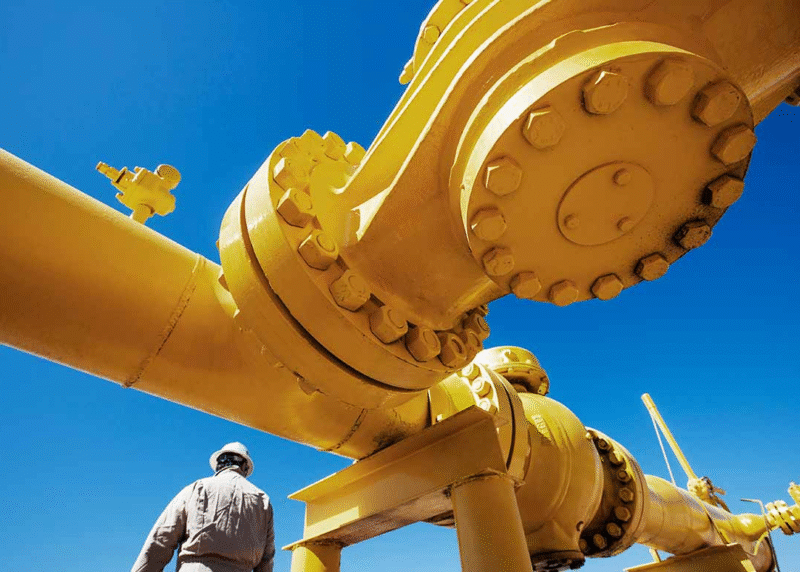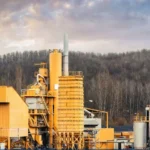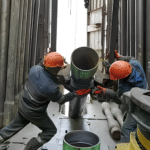Drilling Fluids and Additives: The Backbone of Oilfield Operations
Drilling Fluids, also known as drilling muds, are essential components in the oil and gas industry. They play a crucial role in the drilling process by facilitating the drilling of wells, cooling and lubricating the drill bit, carrying cuttings to the surface, and maintaining wellbore stability. Drilling fluids are complex mixtures that consist of a base fluid and various additives. In this article, we will delve into the importance of drilling fluids and additives, their functions, types, and the benefits they provide in the drilling operations.
Importance of Drilling Fluids
Drilling fluids are vital for the success of drilling operations for several reasons:
Wellbore Stability:
Drilling fluids help maintain wellbore stability by exerting pressure on the formation walls, preventing collapse or damage. They form a thin filter cake that seals the formation and minimizes fluid loss.
Lubrication and Cooling:
Drilling fluids lubricate the drill bit and the drill string, reducing friction and heat generation. This lubrication and cooling action prolongs the life of the drilling equipment and enhances drilling efficiency.
Cuttings Removal:
Drilling fluids carry the drilled cuttings to the surface, preventing them from settling at the bottom of the well. Efficient cuttings removal ensures smooth drilling operations and prevents blockages.
Formation Evaluation:
Drilling fluids aid in formation evaluation by providing valuable information about the subsurface formations. Analysis of the drilling fluids can reveal the presence of hydrocarbons, formation pressures, and potential drilling hazards.
Functions of Drilling Fluid Additives
Drilling fluid additives are substances added to the base fluid to enhance its performance and tailor it to specific drilling conditions. These additives serve various functions, including:
Viscosity Control:
Additives like polymers and viscosifiers help control the viscosity of the drilling fluid. This is crucial for maintaining the desired flow properties and carrying capacity.
Fluid Loss Control:
Fluid loss additives, such as clay stabilizers and filtration control agents, reduce the loss of drilling fluid into the formation. They form a filter cake on the wellbore wall, preventing fluid invasion and maintaining wellbore stability.
Weighting Agents:
Weighting agents, like barite and hematite, are added to increase the density of the drilling fluid. This helps control the pressure in the well, prevent formation influx, and counteract the natural formation pressures.
Emulsifiers and Defoamers:
Emulsifiers aid in the proper emulsification of oil-based drilling fluids, while defoamers eliminate excessive foam formation during drilling operations. These additives ensure efficient drilling fluid performance.
Biocides:
Biocides are used to control the growth of bacteria and microorganisms in the drilling fluid. They prevent microbial-induced corrosion, reduce the risk of equipment damage, and maintain fluid integrity.
Shale Inhibition:
Shale inhibitors, such as potassium chloride and shale stabilizers, prevent the swelling and dispersion of shale formations. They help maintain wellbore stability and minimize drilling problems associated with shales.
Corrosion Inhibitors:
Corrosion inhibitors protect the drilling equipment from corrosion caused by the drilling fluid. They form a protective film on the metal surfaces, extending the life of the equipment and reducing maintenance costs.
Types of Drilling Fluids
-
Water-Based Mud (WBM): The most common type, using water as the base fluid.
-
Oil-Based Mud (OBM): Contains diesel or mineral oil, offering better lubrication and stability.
-
Synthetic-Based Mud (SBM): Designed to reduce environmental impact while mimicking OBM performance.
-
Air/Gas-Based Fluids: Used for underbalanced drilling with minimal hydrostatic pressure.
Drilling fluids can be broadly classified into three main types:
Water-Based Drilling Fluids:
Water-based drilling fluids, also known as muds, are the most commonly used type. They consist of water as the base fluid and various additives to enhance their performance. Water-based muds are versatile, cost-effective, and environmentally friendly.
Oil-Based Drilling Fluids:
Oil-based drilling fluids, also called synthetic-based muds, are composed of a base fluid, typically oil, and various additives. These fluids offer superior lubrication, temperature stability, and wellbore stability. They are commonly used in challenging drilling environments.
Air and Gas Drilling Fluids:
Air and gas drilling fluids, such as air, nitrogen, or natural gas, are used in specific drilling applications. These fluids provide advantages such as faster drilling rates, reduced formation damage, and better well control. However, they require specialized equipment and are limited to specific wellbore conditions.
Common Drilling Fluid Additives and Their Functions
| Additive Type | Function |
|---|---|
| Weighting Agents | Increase mud density (e.g., barite, hematite) |
| Viscosifiers | Enhance carrying capacity (e.g., bentonite, polymers) |
| Fluid Loss Control | Prevent filtration into formations (e.g., starch, PAC) |
| Shale Inhibitors | Stabilize reactive shales (e.g., KCl, glycol) |
| Lubricants | Reduce torque and drag (e.g., esters, oils, Gilsonite) |
| Lost Circulation Materials (LCM) | Seal fractures (e.g., Gilsonite, cellulose) |
| pH Adjusters | Maintain optimal mud chemistry (e.g., lime, caustic soda) |
Benefits of Using Drilling Fluids and Additives
-
Minimized Formation Damage
-
Stable Borehole Walls
-
Efficient Cuttings Transport
-
Pressure Balance Maintenance
-
Reduced Downhole Problems
-
Improved Rate of Penetration (ROP)
-
Lower Operational Costs
The use of drilling fluids and additives in drilling operations offers several benefits:
Improved Drilling Efficiency:
Drilling fluids and additives optimize the drilling process by reducing friction, enhancing cooling, and improving cuttings removal. This leads to increased drilling rates and improved overall efficiency.
Enhanced Wellbore Stability:
Drilling fluids and their additives help maintain wellbore stability by controlling formation pressures, preventing fluid invasion, and minimizing formation damage. This reduces the risk of wellbore collapse and ensures the integrity of the well.
Accurate Formation Evaluation:
Drilling fluids enable accurate formation evaluation by carrying cuttings to the surface. Analysis of the cuttings and drilling fluids provides valuable information about the subsurface formations, including hydrocarbon presence, formation pressures, and potential drilling hazards.
Reduced Equipment Wear:
The lubricating properties of drilling fluids and additives reduce friction and wear on the drilling equipment, extending its lifespan and reducing maintenance costs.
Environental Protection:
The use of drilling fluids and additives that are environmentally friendly helps minimize the impact of drilling operations on the environment. Water-based drilling fluids, for example, are less harmful and easier to handle compared to oil-based alternatives.
Safety and Well Control:
Drilling fluids aid in well control by exerting pressure on the wellbore and preventing the influx of formation fluids. This enhances safety during drilling operations and reduces the risk of blowouts.
Tailored Solutions:
The availability of a wide range of drilling fluid additives allows for the customization of drilling fluids to specific well conditions. This ensures optimal performance and mitigates drilling challenges.
Challenges and Solutions in Drilling Fluid Engineering
| Challenge | Solution via Additives |
|---|---|
| Formation Instability | Shale inhibitors, sealing agents |
| High-Temperature Drilling | Thermal stabilizers, synthetic polymers |
| Lost Circulation Zones | Gilsonite, calcium carbonate, fibrous LCMs |
| Torque and Drag Issues | Lubricants, OBM or SBM systems |
| Environmental Regulations | Use of biodegradable or synthetic fluid systems |
Frequently Asked Questions (FAQ)
What is the main function of drilling fluid?
Drilling fluid stabilizes the wellbore, removes cuttings, and controls downhole pressures during drilling.
Why are additives needed in mud systems?
Additives modify the fluid’s physical and chemical properties to match wellbore conditions and drilling goals.
Is Gilsonite only used in oil-based mud?
No, Gilsonite is effective in both oil-based and water-based systems for sealing and stabilizing purposes.
How do you prevent mud loss in fractured zones?
Using lost circulation materials (LCM) such as Gilsonite, calcium carbonate, or cellulose plugs helps seal these zones.
Conclusion
Drilling fluids and additives are the lifeblood of efficient and safe oilfield operations. By customizing mud systems with the right additives—such as viscosifiers, lubricants, inhibitors, and lost circulation materials—operators can enhance drilling performance, reduce risks, and maximize productivity.
Explore the composition, types, and functions of drilling fluids and additives. Learn how they improve wellbore stability, lubrication, and formation control.
-
Drilling mud system additives
-
Oilfield mud engineering solutions
-
High-temperature drilling mud
-
Lost circulation fluid solution
Looking for Premium Drilling Additives?
We supply high-performance drilling fluid additives, including Gilsonite, bentonite, polymers, and more. Tailor your mud system for maximum results:
✔️ Control formation pressures
✔️ Reduce circulation loss
✔️ Improve ROP and wellbore stability
For more information or to place an order, please contact PUB-Ltd sales team @ Contact Us. PUB-Ltd as your Drilling fluid additives Supplier. Our Expert will be in touch with you to guide you about the Use of Gilsonite, that can be produced according to your project requirements.





